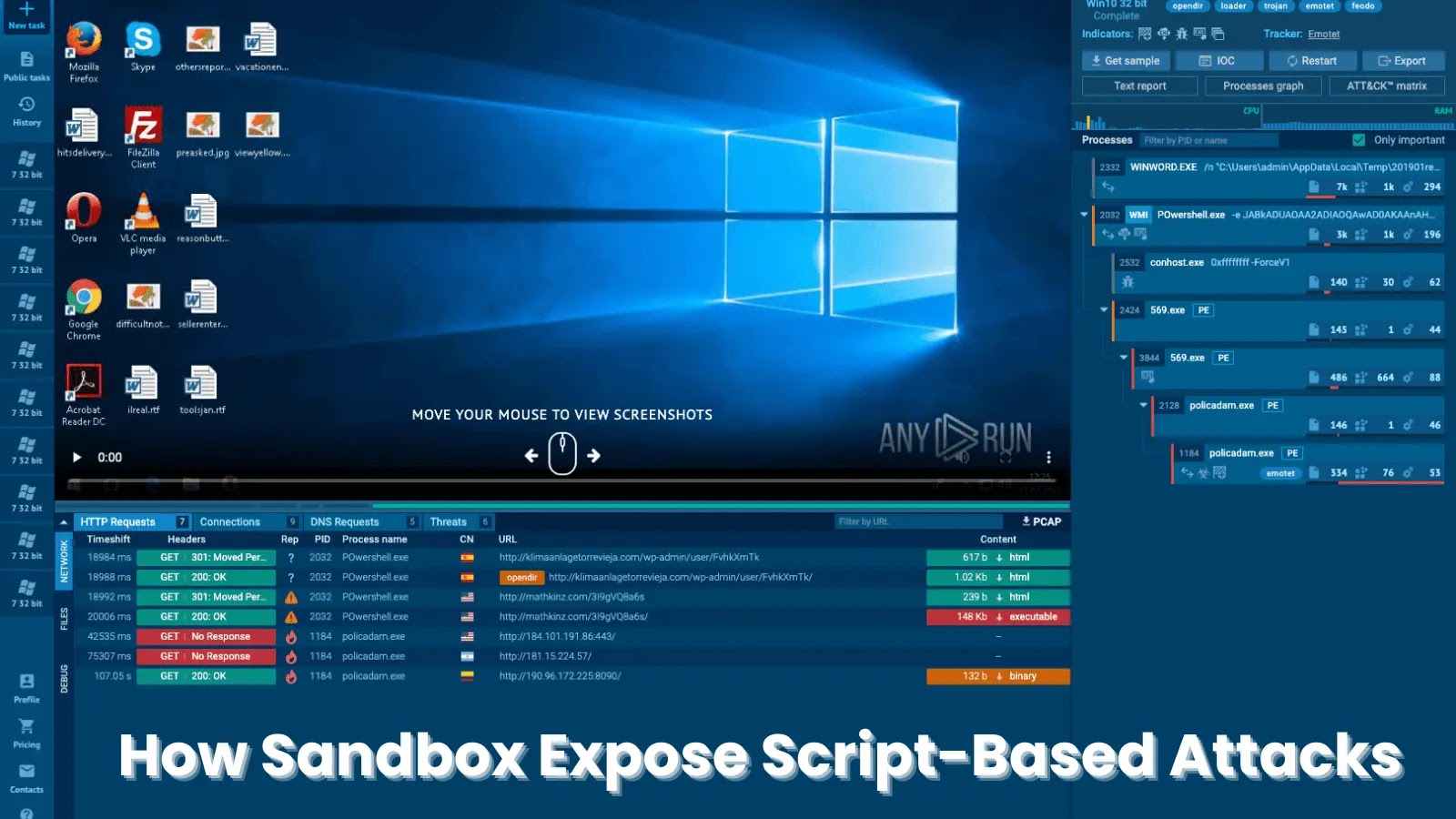[ad_1]
Cybercriminals employ numerous tactics to infiltrate endpoints and scripts are among the most destructive.
You can trigger an infection chain by clicking on a seemingly innocuous document, potentially compromising your entire network.
To prevent this, analyzing suspicious files in malware analysis sandboxes is crucial. Here are some instances where they prove invaluable.
Decoding VBE Files
VBE files are essentially encoded VBS scripts initially designed back in the day to safeguard intellectual property. As a result, it is impossible to view their source code without extra tools, hindering analysis and allowing detection evasion.
However, uploading a VBE file to a proper sandbox service instantly reveals the decoded VBS script at play. It presents a full view of the script execution process, including its requested functions, transferred data, and commands.
Viewing Command Returns
A sandbox can also reveal the results of commands executed within scripts. In this example, the cmd process command line contains the command “dir,” yet it remains unknown what it returns.
With the help of a sandbox, users can see the command’s output as well as download it for further analysis. This empowers analysts to fully comprehend the attacker’s actions and the potential harm caused.
Analyzing any suspicious attachment or URL in a free interactive malware sandbox like ANY.RUN can instantly provide you with a conclusive verdict.
Observing Script Usage by Executables
A sandbox’s ability to track script-executable interactions is crucial in identifying malicious scripts that depend on executables for their functionality. This insight helps analysts detect and neutralize script-based malware by employing executable files as a launchpad for their malicious activities.
In the provided example, a malicious executable utilizes the Windows Management Instrumentation Command (WMIC) tool to load and execute a VBScript file. This approach allows the malware to conceal its true nature and manipulate the system without raising suspicion.
Analyzing VBS and JS-based Malware
A sandbox can streamline investigating VBS-based malware, saving a lot of time on extensive reverse engineering or debugging. This example shows the WSHRAT malware making a WMI query likely to check for all the installed antivirus solutions on the device.
You can try the full range of ANY.RUN’s capabilities completely for free by requesting 14 days of a free trial.
[ad_2]
Source link

